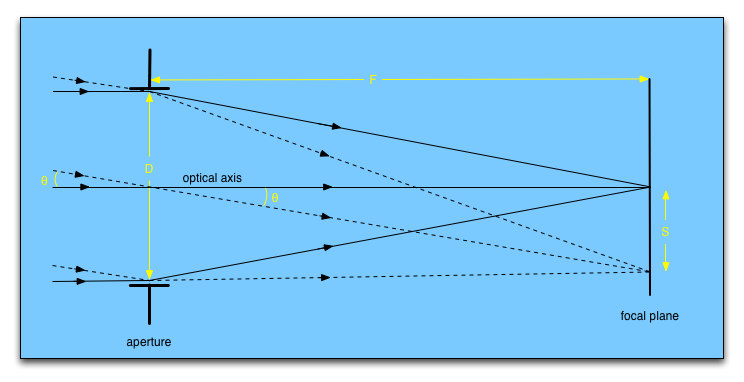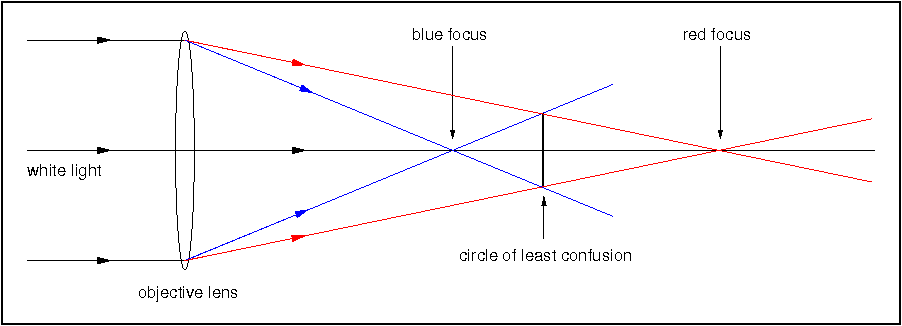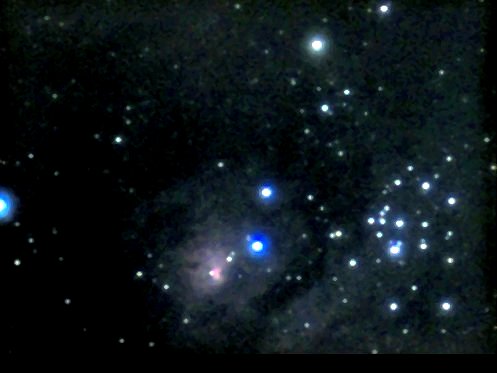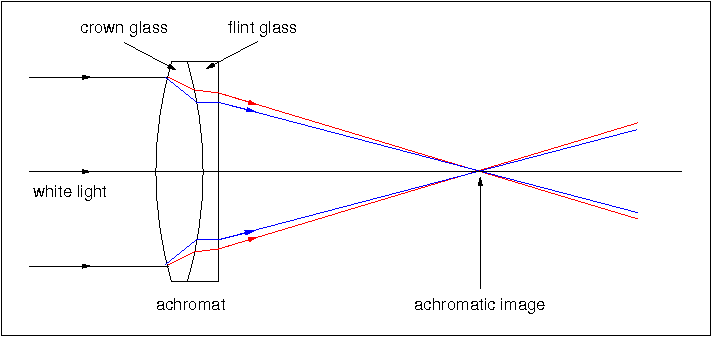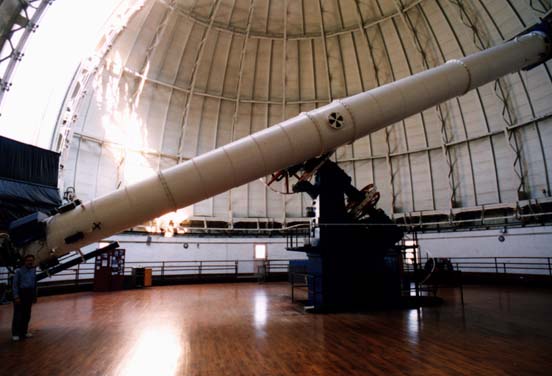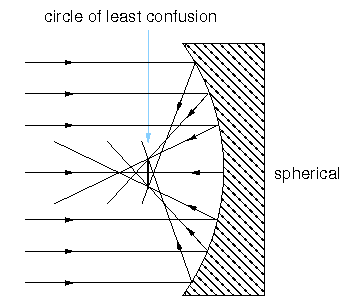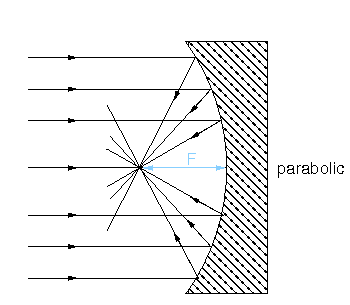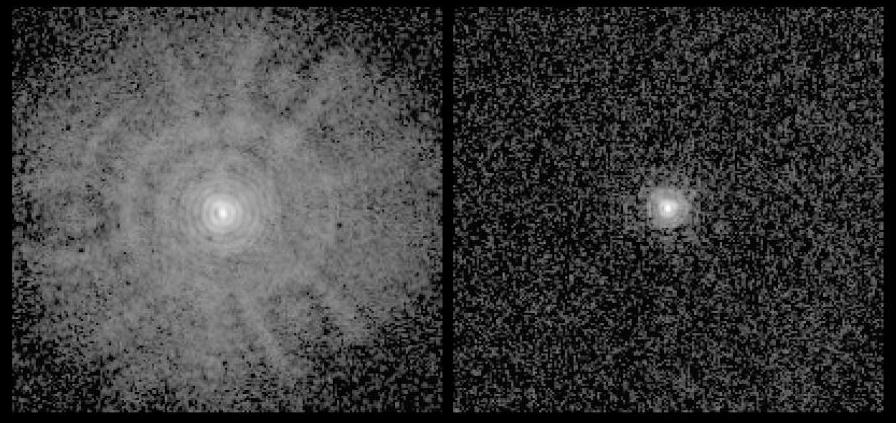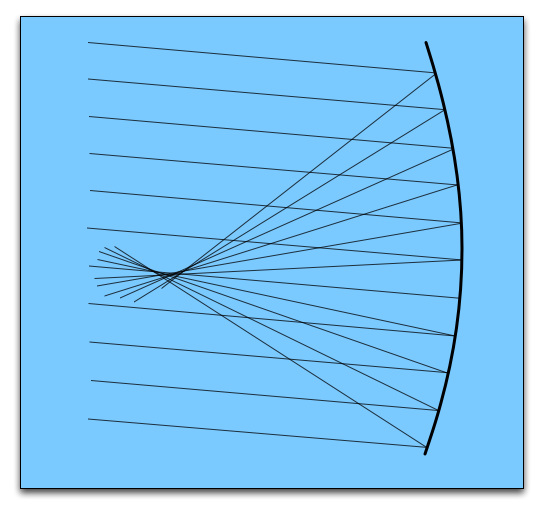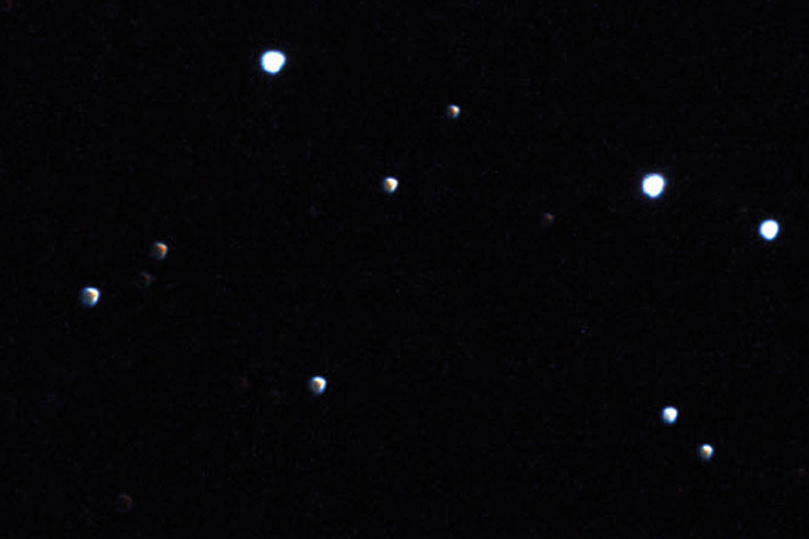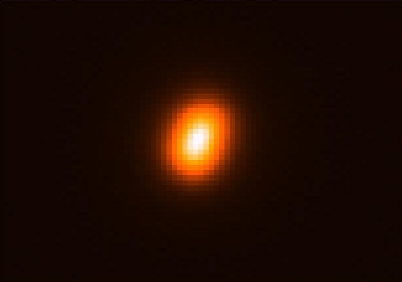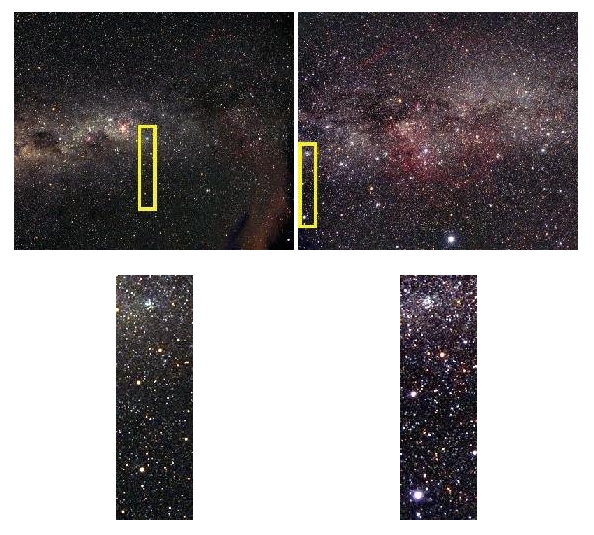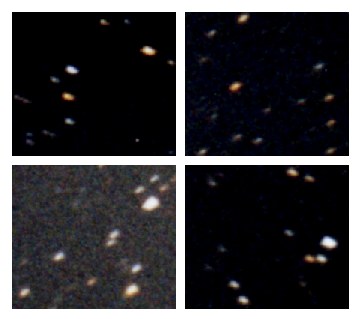In the previous lectures we have seen how light arrives at our telescopes, but how do telescopes work to create an image? In the next block of lectures we're going to look at telescopes - how they work, and the pros and cons of different telescope designs. Telescopes are vital to astronomy, as they fulfil two roles:
- they allow the collection of light over a much larger area, so that faint objects can be studied,
- they provide higher angular resolution, allowing studies in greater spatial detail.
Basic Principles
Figure 9 shows a schematic of a telescope. On the left, light from two distant sources arrives at the telescope. As all astronomical sources are effectively at an infinite distance compared to the dimensions of a telescope, the rays from each source can be assumed to be parallel.
The light is collected by an aperture of diameter \(D\) which forms an image of the two sources at the focal plane. The line through the centre of the aperture and the focal plane, and orthogonal to them, defines the optical axis of the system. Since the sources are at infinity, the focal length, \(F\), of the telescope is defined by the distance between the focal plane and the aperture. In astronomical telescopes, the aperture is usually a lens or a mirror, and is circular, hence the amount of light collected is proportional to \(D^2\).
The aperture diameter is the single most important parameter affecting the performance of a telescope and hence most telescopes are usually referred to in terms of it, e.g. the ESO 3.6m telescope in Chile, where the 3.6m is the diameter of its primary mirror.
